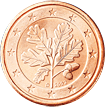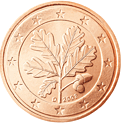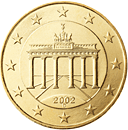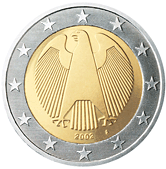 W
WThis article covers euro gold and silver commemorative coins issued in Germany. It also covers rare cases of collectors coins minted using other precious metals. It does not cover either the German €2 commemorative coins or the Pre-Euro German Currencies. For euro gold and silver commemorative coins of other countries see Euro gold and silver commemorative coins.
 W
WPalmbaumtaler are coins which were issued by several northern German states during the 17th century, that all share a palm tree as a common motif. The palm was chosen because it was considered a symbol of strength and resilience.
 W
WThe Reichsmark was the currency of Germany from 1924 until 20 June 1948 in West Germany, where it was replaced with the Deutsche Mark, and until 23 June 1948 in East Germany, where it was replaced by the East German mark. The Reichsmark was subdivided into 100 Reichspfennigs. The Mark is an ancient Germanic weight measure, traditionally a half pound, later used for several coins; whereas Reich, comes from the official name for the German state from 1871 to 1945, Deutsches Reich.
 W
WScheidemünzen were representative coins issued alongside Kurantgeld or currency money in Austria and Germany up to start of the First World War in August 1914 whose intrinsic metal value was less than the legal value stamped on them. Like Notgeld they were a kind of credit money. The term Scheidemünze referred to the "division into hellers and pfennigs during the purchase process". It thus applied to the low- to medium-value coins. Since 1915, all coins minted in Germany, including the current euro coins have been Scheidemünzen or fiat money as opposed to currency or commodity money whose nominal value is fully covered by its intrinsic value.
 W
W W
W W
W W
W W
W W
W W
W W
W W
W W
W W
W W
W W
W W
W W
W W
W W
W W
W W
W W
W W
W W
W W
W W
W